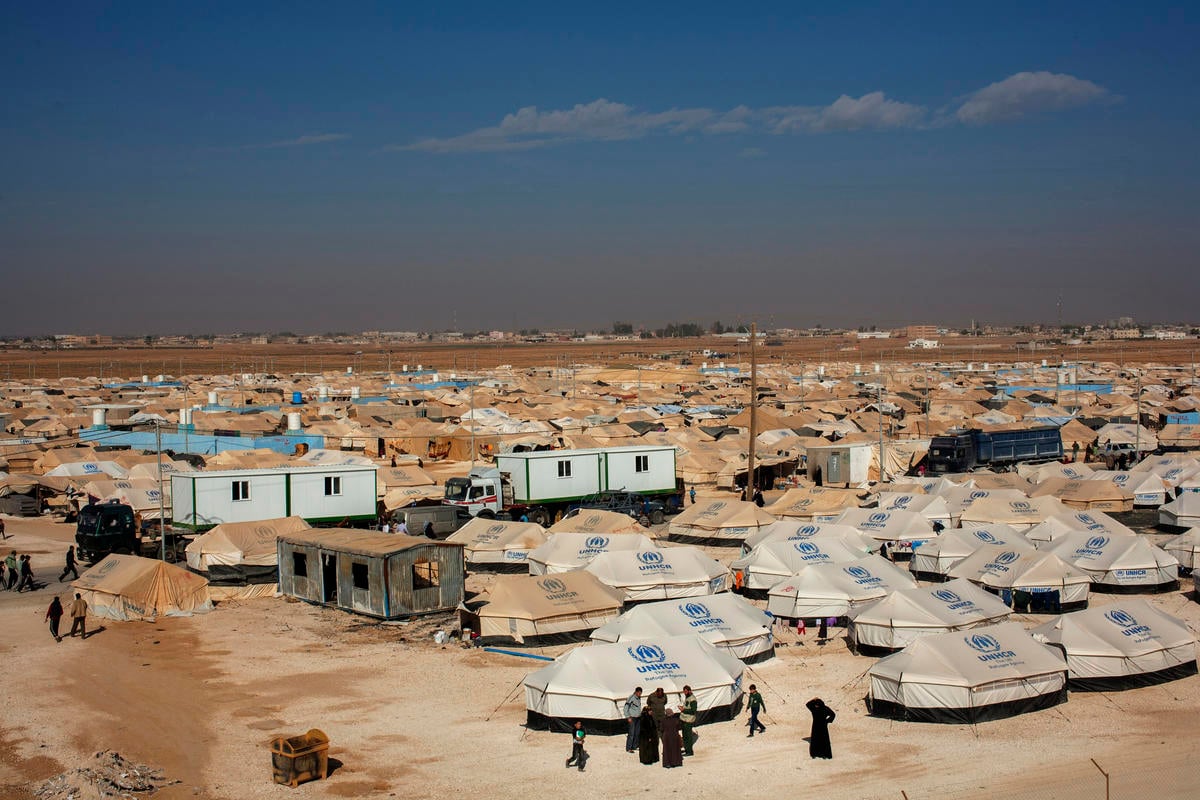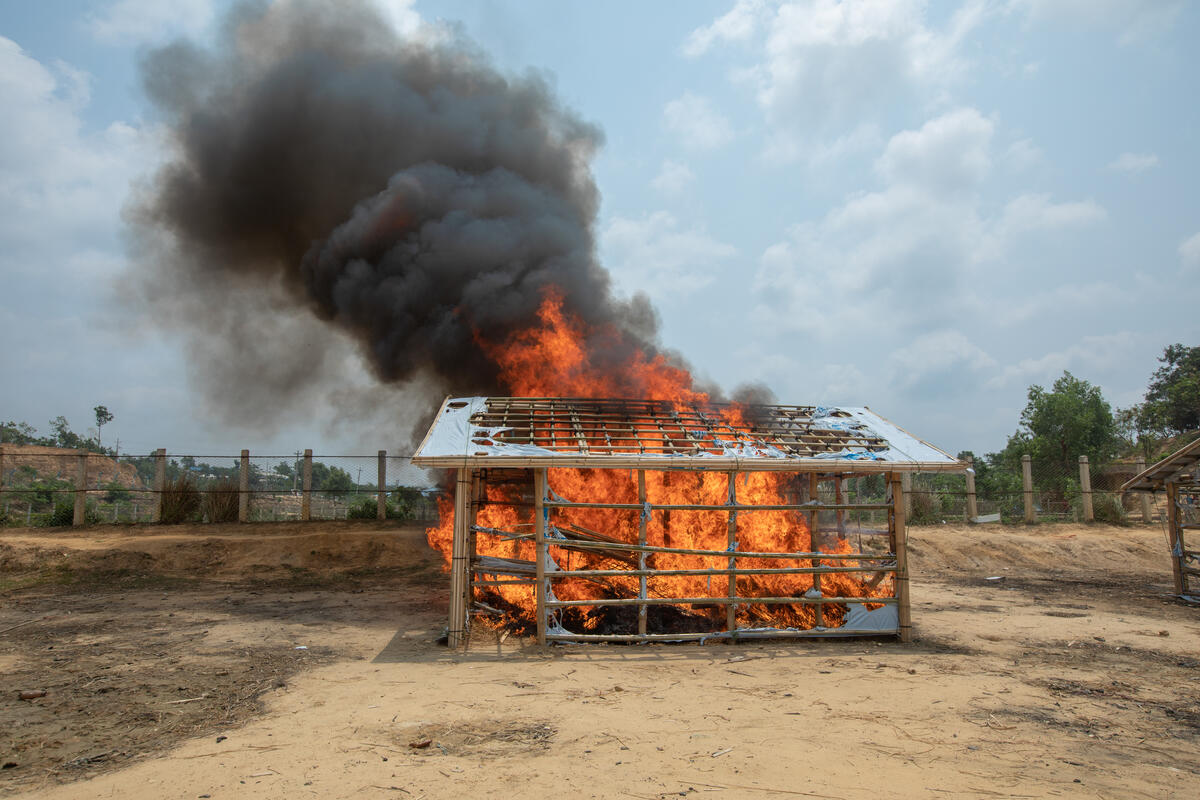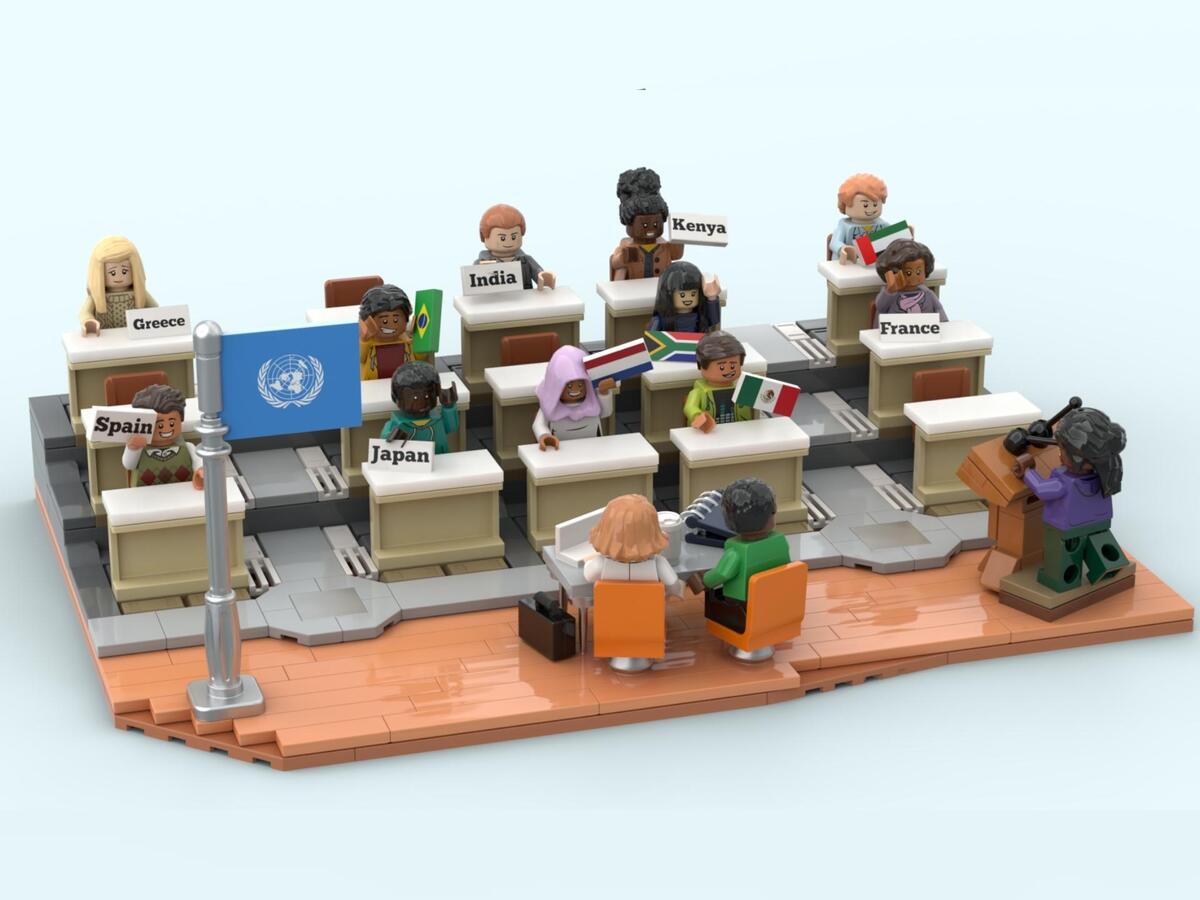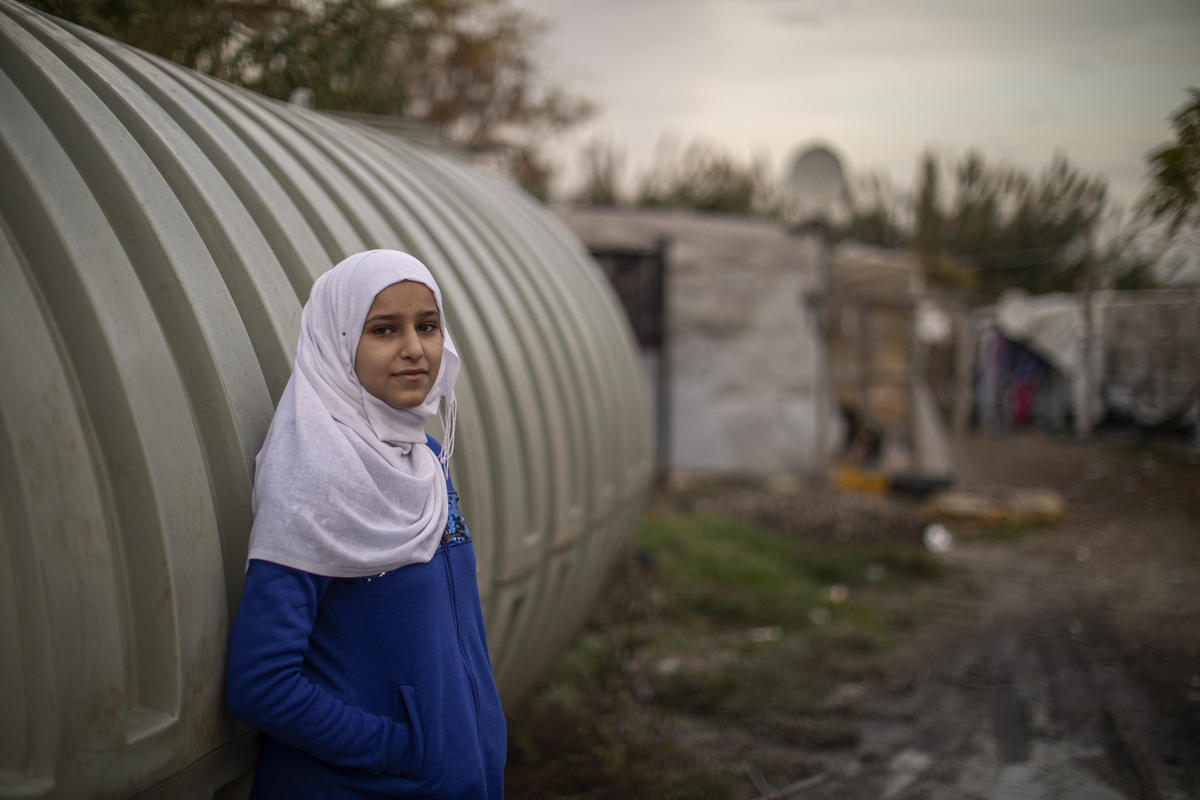Fighting water scarcity in Cox's Bazar refugee camps
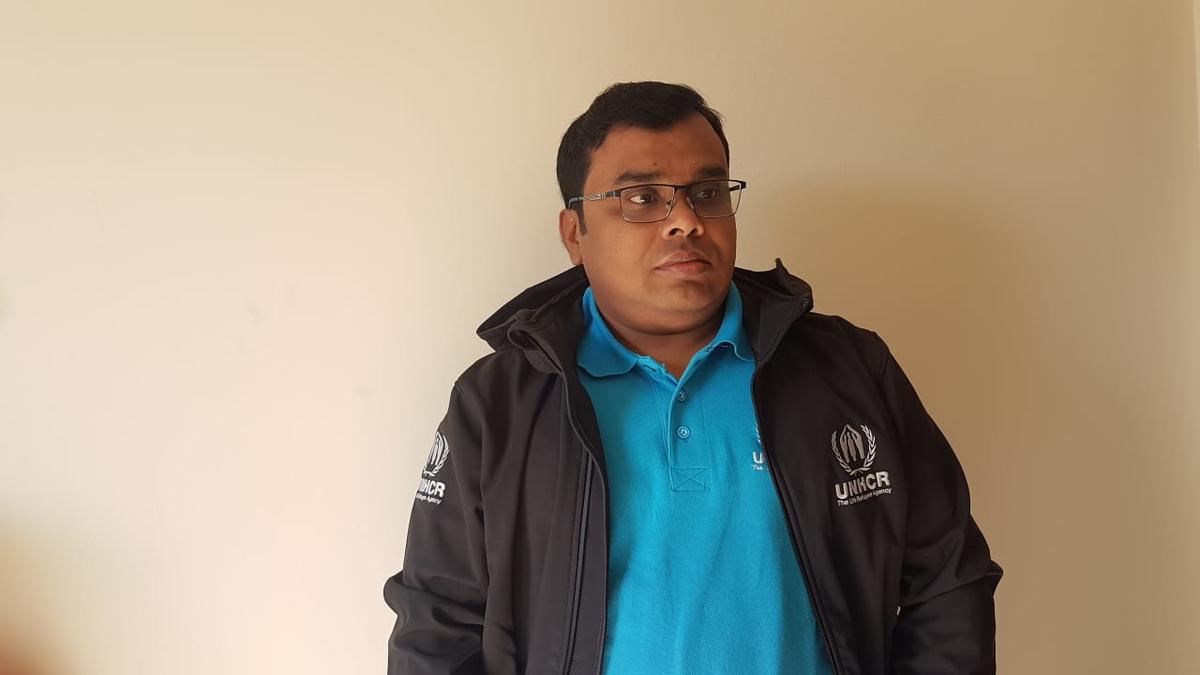
Fighting water scarcity in Cox's Bazar refugee camps
More than 900,000 Rohingya refugees live across 36 different locations in Cox’s Bazar area, in south-eastern Bangladesh. Water is scarce in most locations. It is challenging to secure adequate water sources for the whole refugee population – most of whom fled to Bangladesh in late 2017. This is why UNHCR, the UN Refugee Agency and partners have stepped up their efforts throughout 2018 to address the massive water and sanitation needs.
Minhaj Uddin Ahmed is a UNHCR assistant water, sanitation and hygiene officer working on the Rohingya refugee response in Cox’s Bazar. He has worked on water, sanitation and hygiene programmes in Cox’s Bazar with UNHCR for the past five years.
What are the biggest water issues faced by the refugee camps?
In this part of Bangladesh, we experience a water crisis during the dry season – from end of November through April or May. The water levels fall sharply, making it very difficult to pump water.
In the Nayapara registered camps, we have to rely on other sources such as canals and a temporary dam because the main reservoir usually dries up for three months a year starting in April. Water is delivered by truck as well as a pipeline and then treated before distribution.
Prior to the latest massive refugee influx in August 2017, the Kutupalong refugee camps had 134 deep tube wells. After the influx, due to the huge increase in the refugee population and the urgent need to provide more water, a decision was taken to install more tube wells.
Shallow tube wells can be installed within three to four days, whereas deep tube wells require three to four weeks. Several non-governmental organisations, international agencies, local businesses and others willing to help contributed and almost 20,000 tube wells were installed in the camps within a very short period of time.
What have the major problems been?
At the start of the refugee influx, due to the urgency to react and provide essential services, there was insufficient planning between the many organisations working to help the Rohingya. Many tube wells were installed, but often too close to each other. This meant they could be easily contaminated by latrines nearby or from other contaminated sources.
Also, with water being pumped from 20,000 tube wells at the same time, there was a dramatic drop in water levels of the first, ground-level aquifer. This can cause severe water shortages – not only in the camps, but also for the surrounding host communities.
"We could have seen a massive outbreak of diseases in the camps. It did not happen."
To overcome this issue and to avoid future water conflicts, a prompt decision was taken at the start of 2018 by agencies working in the water, sanitation and hygiene sector to start decommissioning shallow tube wells and start installing only deep tube wells.
One of our big concerns was that the shallow tube wells could have resulted in outbreaks of water-related diseases. To avoid this possibility, we began replacing emergency latrines with new, more hygienic designs approved by water and sanitation experts and the Bangladesh government.
What problems do water shortages result in on a day to day basis?
The lack of ground-level water in the Teknaf area, where the Nayapara refugee sites are located, meant that we had to rely on surface water. But during the dry season we had to truck in water from nearby canals because there was not enough water in the reservoirs. Three or four trucks were used continuously on a daily basis. We also had to build five new dams because the refugee population had increased so much.
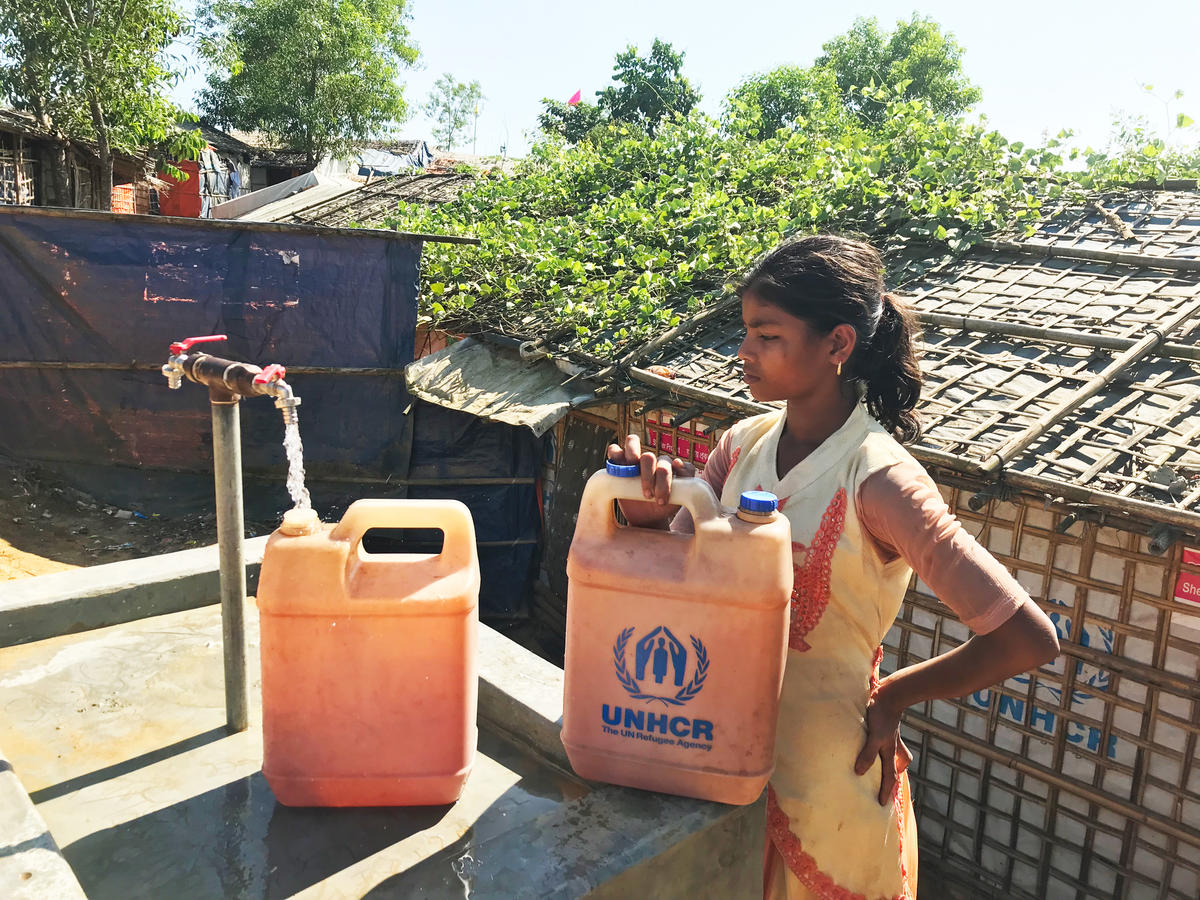
What additional problems is the dry season bringing?
During normal periods, we try to provide 20 litres of water per person every day. From March to May 2017 we had to introduce water rationing. It has been challenging to secure adequate water sources for the whole refugee population – most of whom fled to Bangladesh in late 2017. This is why UNHCR partners and other water and sanitation agencies, working with the government of Bangladesh, stepped up their efforts throughout 2018 to address the massive water and sanitation needs.
Using solar energy allowed the humanitarian community to reduce energy costs and fuel emissions. Chlorination – adding chlorine to kill bacteria and microbes in the water – is a life-saver in refugee sites of this scale.
What kind of physical and other challenges has UNHCR faced since the start of the emergency to provide clean water for so many people living in very difficult conditions?
The hilly topography of the mega Balukhali-Kutupalong refugee settlement has been the biggest challenge. Most shelters were built at the top or on the sides of hills, around 40 to 60 feet above ground. Families had to walk down the hills to collect water.
"The shallow tube wells could have resulted in outbreaks of water-related diseases."
At the start of the influx, it was really hard for people to collect water and take it up the hill to their shelters, as the roads were gravelly and very slippery – especially during the rainy season.
Why are we looking at solar and other sustainable technologies moving forward?
The deep tube wells pump enough water for the population, but the main problem is how to monitor and maintain thousands of water points. The solution was to install overhead water tanks drawing water with the help of a pump and providing water through a pipe network using multiple tap stands.
In order to run the pump, we needed electricity, diesel or some other form of energy. Solar was the most efficient and environmentally friendly option, as well as the most cost-effective.
The Teknaf area, due to its specific geography, will continue to face water shortages. A big investment is needed to find a sustainable solution to meet water demands to support both the local population and refugees. This might be through building a desalination plant or looking at other engineering solutions. Discussions are taking place with the Asian Development Bank (ADB) as well as other donors, and will also require support from the Bangladesh government.
What level of knowledge do families have about the need to have clean water sources?
Most refugees understand that it is important to have safe and clean water to avoid diseases. However, not everyone understands that water can be easily contaminated by dirty water containers. Sometimes water can be contaminated while people collect or carry water. Both women and men cover water containers with their clothes, which can contaminate the water.
Our teams carry out regular hygiene sessions in the refugee sites to raise awareness regarding safe water collection within the community.
How involved have refugees been in planning water networks/tap stands for the future?
We can provide technical support but support from the community has been crucial in implementing the projects. Our solar-powered water chlorination project required large spaces to place the overhead tanks, install the solar panels, boreholes and pipe networks.
"A big investment is needed to find a sustainable solution to meet water demands."
This was difficult, since the camps are very congested. The community was very cooperative and moved their shelters to provide us with space, which allowed us to install the treatment units. Now that the installation is complete, both the community and refugees give us regular feedback on the maintenance of the pipe network, tap stands, as well as solar panels, so that we can avoid shortages.
What has been the hardest aspect of your job?
Ensuring that refugees receive enough water and that the water systems are properly maintained. Support from refugees and the host communities has been crucial for the the water networks to run smoothly.
The lack of space in the camps has also been a major challenge for us.
What has been the most rewarding part of your job?
At the beginning of the influx, working closely with the government, our partners and other UN agencies, we were able to provide safe drinking water to the refugees despite the large arrival numbers. If it had not been the case, we could have seen a massive outbreak of diseases in the camps. It did not happen. We continue to do so, using more efficient methods and ensuring water quality. This is our greatest achievement and it makes us proud.


